Ficus Elastic
Rubbery ficus is a tree-like variety. It differs from others in large leathery leaves, which are:
- solid dark green,
- variegated (Belize, Teneque) - with a white edge or spots,
- with burgundy spots (Abidjan),
- almost black (Black Prince).
It branches badly enough, it usually grows just up: if not cut, it can reach the ceiling of the apartment. Propagated by cuttings or leaves.
In care f. elastica is unpretentious: does not like overflow and direct sun exposure. Otherwise, plants, especially monochromatic plants, can grow in any conditions.
Ficus Benjamin
This variety cannot be called unequivocally the second or the first - rather, it shares the first place in popularity with the already described rubber-bearing brother. But visually, these two ficuses are radically different from each other: if Elastica has large leaves and an almost complete absence of branches, then Benjamina, on the contrary, stands out with small leaves (4-12 centimeters in length), excellent branching.
Often, several plants are woven together in a pigtail or lattice, achieving even greater decorativeness.
Inside view f. benjamina there are many sub-varieties: they differ in size, shape, leaf color. For example, "Golden Monique" has light green leaves, 5-6 cm. "Starlight" stands out with an almost white crown, and "Baroque" can be recognized by the curled leaves (curly crown).
Ficus Lyre
Recently, this once rare variety has become surprisingly popular. Growing f. lyrata as well as f. elastica - leaf by leaf, forming a tall trunk without branches. It starts branching only after 4 years or as a result of pruning.
It differs primarily in its large (up to 50 cm!) Unusual leaves expanding towards the ends. Light streaks are clearly visible on leaves with a wavy edge.
The common ficus lyrata is a large plant that calmly reaches 2-3 m in height. But in indoor conditions, you can grow its miniature species - Compact, Bambino.
Ficus Binnendijka
Another variety that is easy to recognize by its appearance is thin (up to 40 mm) long (25-30 cm) leaves, aerial roots, light trunk. Because of the unusual foliage, it is sometimes confused with nolina, but the ficus has a thin trunk. The crown is often dark green (Ali, Amstel King), but variegated varieties (Amstel Gold) are also found.
The Benedict variety does not like bright sun, prefers to grow in partial shade. Water it only after the top layer has dried - this way you will never flood the plant or damage it.
Ficus creeping
We have already examined large-leaved and small-leaved trees, it's time to get acquainted with an extremely unusual variety - f. pumila. This dwarf ground cover flower pulls branches down rather than pulling up.
Another difference is the love of the sun, it can grow even on the east or south side under direct rays. He loves water no less - you should not be afraid to pour the pumila, the drying out of the earthen coma is destructive for him.
The leaves are round and thin. Almost all species are variegated (Sunny, Dort). Propagated by shoots.
Ficus Bengal
The second name of the variety - banyan - comes from an unusual form of life in the wild. The tree forms aerial roots, which, going down, take root, and over time - woody and turn into additional trunks. Thus, the tree can "step" to the side, expanding the diameter of its crown and forming a whole grove of one single plant.
In the wild, it grows up to 30-40 m up and up to 400 (!) In breadth.
Indoor f. benghalensis is not so large - 2-3 m. Outwardly it resembles a rubber-bearing and a lyrate at the same time.
Ficus Triangular
It got its name from the shape of the leaves - narrow at the trunk, wide at the edge. The leaves are dense, leathery, reaching a length of 5-6 cm. To make the leaves look decorative, the plant needs high humidity - put a moisturizer next to it or spray at least once a day.
When grown in a pot, flower sizes rarely exceed 1 meter in height. Color f. triangularis depends on the variety - the crown is monochromatic green or variegated - with yellow spots.
Ficus Ginseng
Perhaps one of the most decorative species is ginseng or microcarpa. For flower lovers, it is called "underground" bonsai, because the bizarre crooked trunk resembles this variant of plant formation. The lower part of the stem is bare, from above there is a dense crown of dense glossy leaves.
For successful cultivation f. ginseng microcarpa requires a semi-shaded area without drafts. If the flower blows out, it can throw off all the leaves and lose its decorative effect.
Ficus Retuza
Another "natural bonsai" that resembles the previous variety. But unlike microcarp with almost round leaves, f. retusa leaves are thinner, pointed (shaped like Benjamin's foliage). But the trunk is the same non-standard - thick, curved, beautiful in its own way.
The flower is grown in well-lit places, it requires frequent watering and, if possible, spraying or maintaining high humidity.
Ficus Parcel
This variety is considered very rare and real connoisseurs of ficuses are specifically looking for it for their collections. But love f. parcellii not only for its inaccessibility, but also for its beauty: tough green leaves seem to be splattered with white paint. A pot with such a flower will decorate any living room or greenhouse.
The species is very fond of heat, so you need to protect it from drafts and hypothermia, as well as direct sunlight (burns will appear). No need to spare the water: water and spray more often.
Ficus Ivy
The closest brother of the pumila, at the same time similar to ivy. The truth has a more modest size - both general and individual monophonic leaves. Grow f. hederacea roxb as an ampelous flower - on shelves, in hanging pots.
To make the ivy ficus feel good and grow constantly, provide it with high-quality regular watering with settled water. Do not forget to drain well before planting - the roots should not be constantly in the water.
Ficus Karika
One of the few varieties with edible fruits. The second name of the species is known to everyone - figs! Indeed, “figs” grow on the stems of the ficus - delicious fruits that can be eaten.
In appearance f. carica resembles a tall tree on a thin trunk with a lush crown. The leaves are large, the shape is broad-lobed, palmate-incised (similar to grape leaves). Unlike its brethren, the carica is not so thermophilic - it does not tolerate heat well, it grows best at temperatures up to 20 degrees. It is also better to protect it from direct sunlight.
Ficus deltoid
The name contains a description of the appearance: leaves in the form of soft triangles resemble the spelling of the letter "delta". Plates are medium-sized (5-8 cm in length and width), dense. Most often monochromatic, but variegated subspecies are also found. On the branches of a young f. deltoidea, you can see small fruits - they are inedible, but give the plant a special recognizable appearance.
For successful cultivation, deltoid ficus is placed in a bright place away from radiators (during the heating season). Water and spray the flower abundantly.
Ficus Sacred
The third bonsai on the list, which grows in the wild like a banyan tree. However, in indoor conditions it is distinguished by its small size, as well as a decorative trunk of an unusual shape. The leaves are triangular, with elongated tips. The color is green, light yellow streaks are clearly visible.
Unpretentious f. religiosa is undemanding to soil, will grow well at temperatures above 15 degrees and regular watering.
Ficus Rusty
In appearance f. rubiginosa can be easily confused with variegated rubbery, but rusty ficus is smaller and shorter leaves. The color is variegated, the cores and tips of the leaf are burgundy. The variety is more lush, bushy.
It grows well in well-lit places, in conditions of constant high humidity. It should be understood that the lighter the place of growth, the more decorative the leaves of the flower will be.
Ficus Goblet
Not the most visually beautiful view, but the most problem-free in cultivation: the plant firmly tolerates temperature changes, overflow or drought, dry air. Leaves are long, oval - up to 20 cm in length, up to 6-7 in width. Solid, saturated green.
Though f. cyathistipula and undemanding to the conditions, nevertheless, the plant will feel better with sufficient lighting, a temperature of at least 16 degrees, high humidity.
Ficus Mountain
Let's return to the creeping flowers: if the 2 previous ones (pumila, ivy) were similar to each other at least in small size, then f. montana is another matter entirely. Its leaves are large enough (~ 8 * 4 cm), elongated oval. Since the branches fall down, it is grown as an ampelous plant.
The lighter and warmer the room is, the faster the mountain variety will grow. And vice versa - in dark cool corners, the flower may stop growing altogether.
Ficus Palmera
Another species suitable for growing in bonsai form: the root system is shallow, so the flower can grow in shallow containers commonly used for bonsai. The trunk expands as needed - the plant uses it to store water during the dry season.
Leaves at f. palmeri is light green, heart-shaped, with pronounced light veins. In wild plants, the size of the plates reaches 15 cm in length and width; in indoor dwarf trees, they are usually smaller.
Ficus petiolate
An amazing variety that can look completely different: in arid regions, it expands the lower part of the trunk to store life-giving moisture. When wet, it is a tree with a thin, elongated leg. Combines both options into one - dark green heart-shaped leaf plates with red veins.
When growing in homes and apartments, please note that f. petiolaris does not like drafts, direct exposure to ultraviolet radiation and dry air. In addition, the flower sheds its leaves for the winter - this does not need to be scared, in the spring the sedentary ficus will grow again.
Ficus arrow-shaped
Finally, the fourth creeping variety - f. sagitatta gets its name from its long, sharp, arrow-like leaves. A monochromatic plant looks aesthetically pleasing, but a variegated subspecies looks more impressive.
Grown on shelves, furniture lids and hanging baskets. As the sagitatta grows, it will lower branches, and if you provide it with hooks, it will crawl along a wall or other surface.
Ficuses are amazing plants! They can be large or small-leaved, grow in the form of trees or shrubs, have slender or bloated trunks. Even having only unpretentious ficuses in the apartment, you can achieve a variety of "indoor landscape".


 10 practical tips for arranging a small kitchen in the country
10 practical tips for arranging a small kitchen in the country
 12 simple ideas for a small garden that will make it visually spacious
12 simple ideas for a small garden that will make it visually spacious
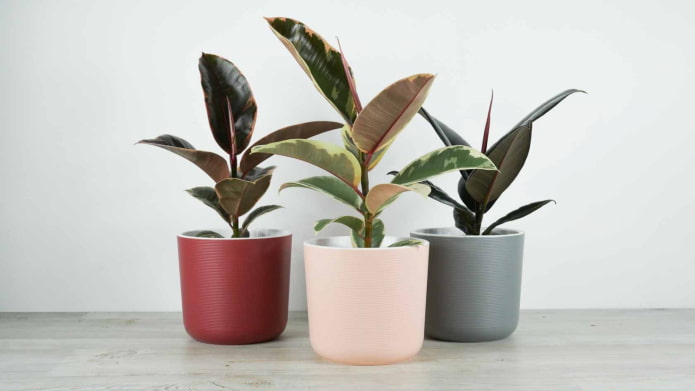
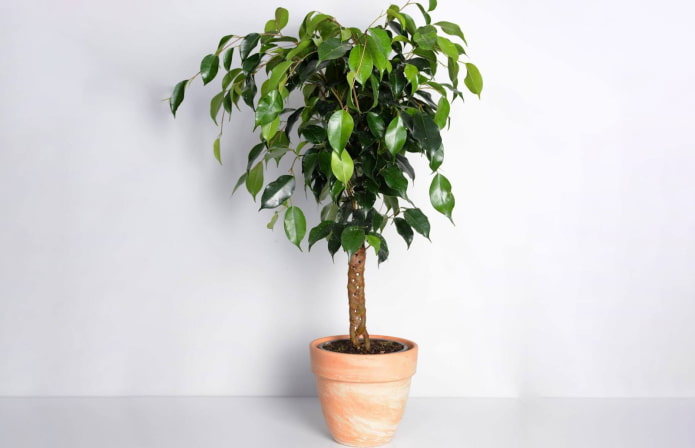
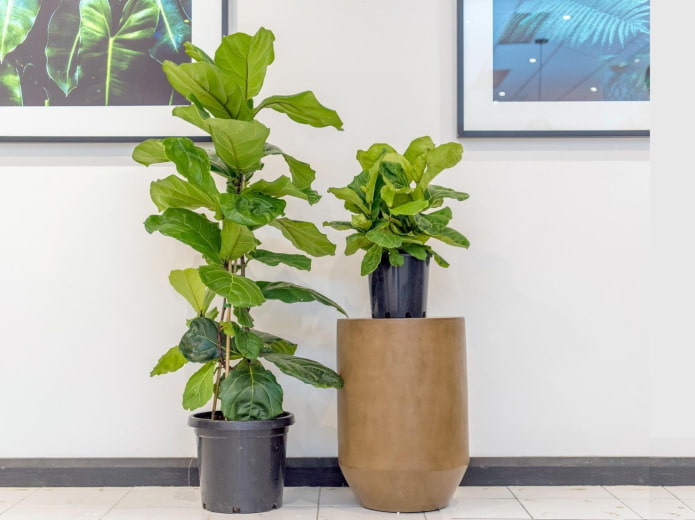
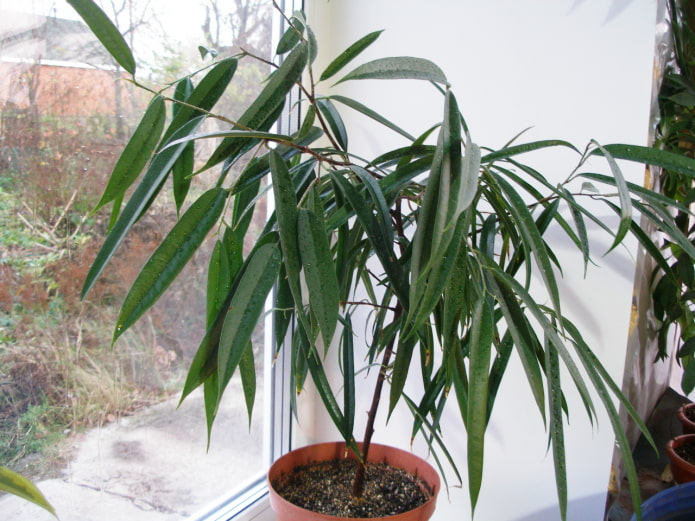
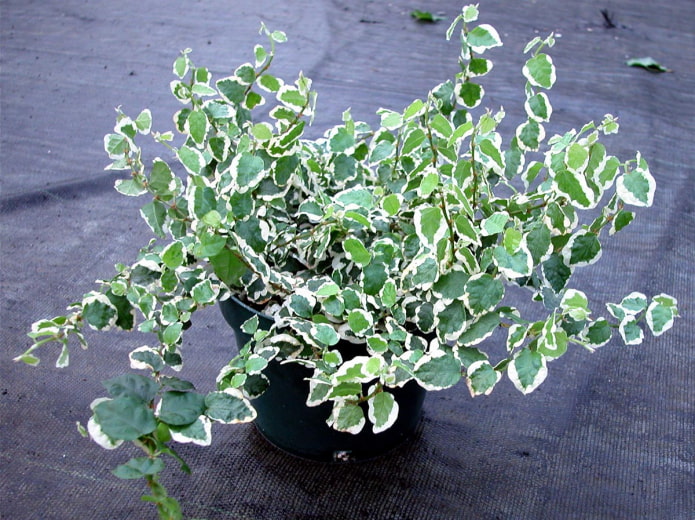
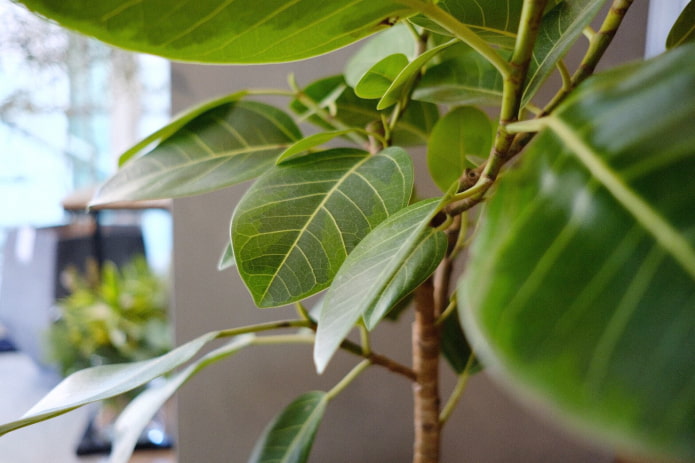
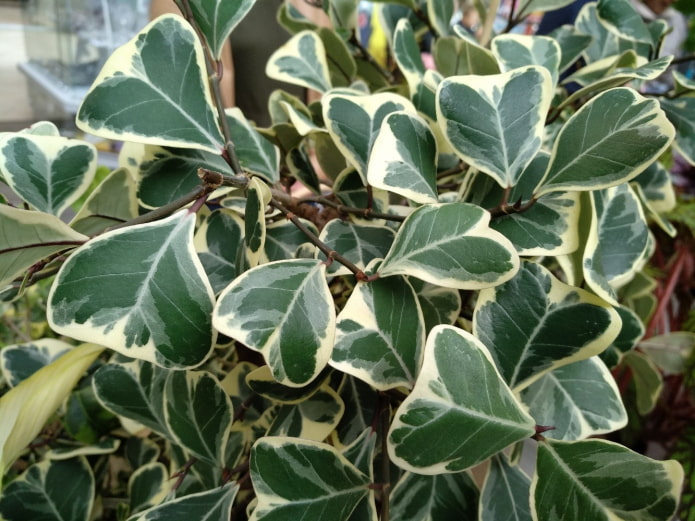

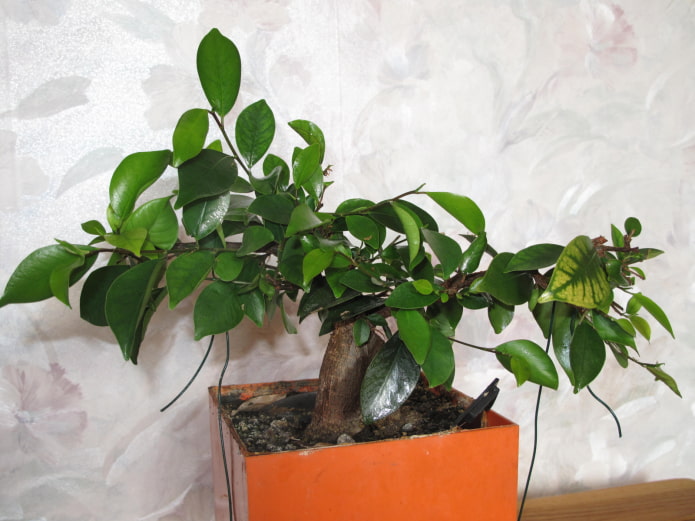
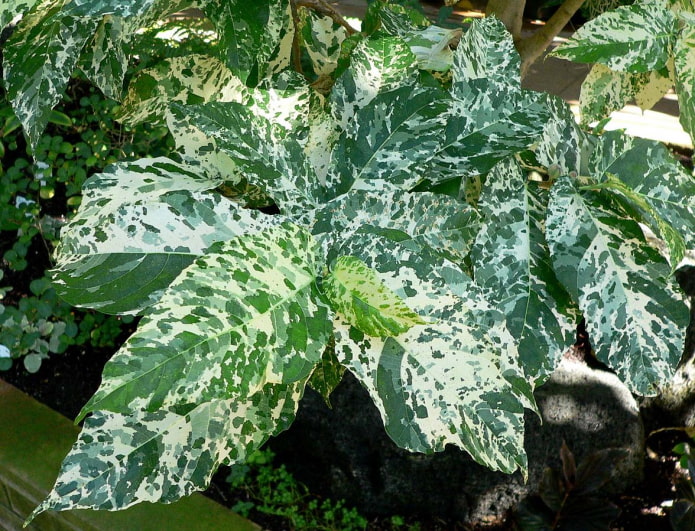
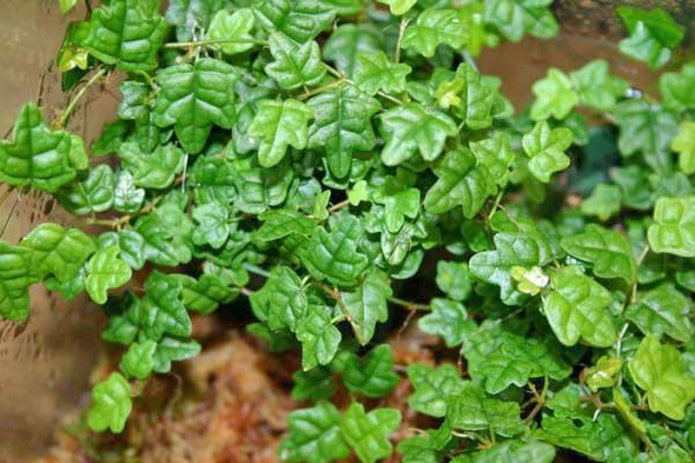
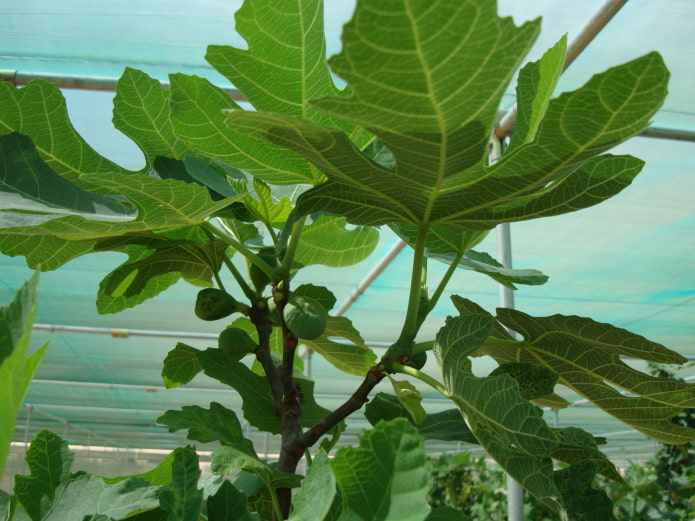
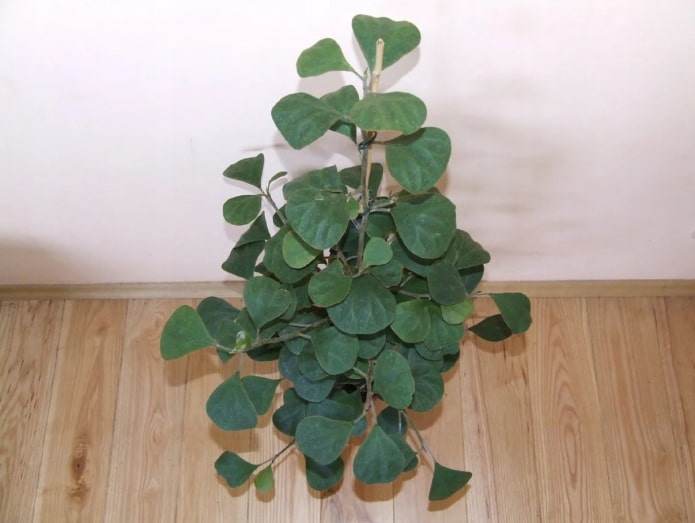
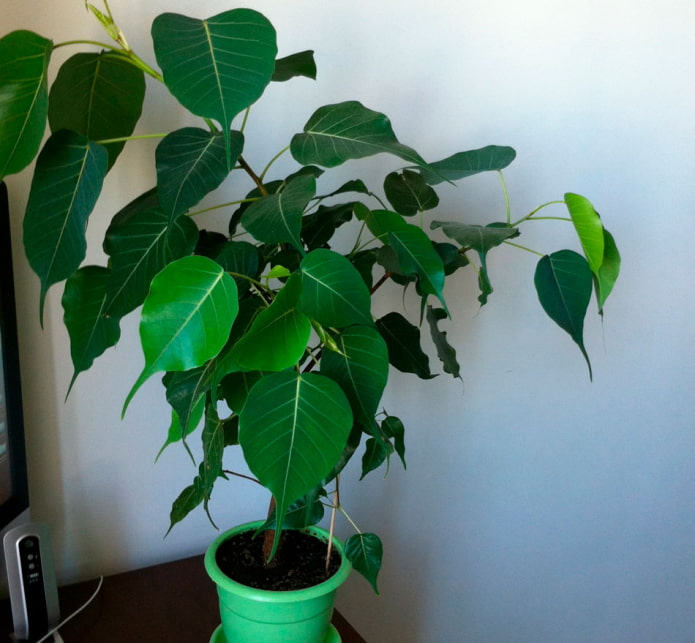



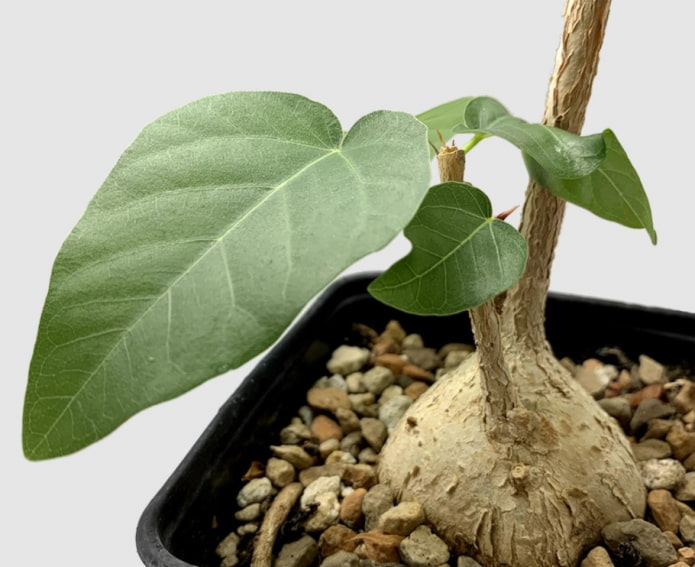
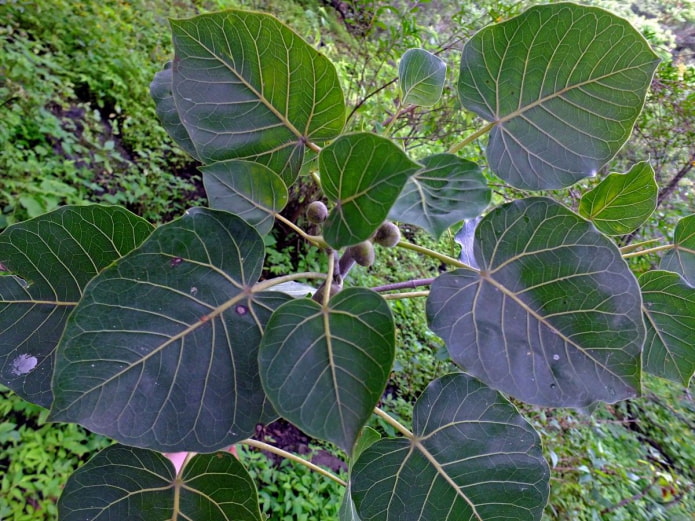


 13 bad habits a good housewife shouldn't have
13 bad habits a good housewife shouldn't have 24/7 home cleanliness - 4 secrets for the perfect housewife
24/7 home cleanliness - 4 secrets for the perfect housewife 6 hotels in Sochi that will give odds to the promoted foreign hotels
6 hotels in Sochi that will give odds to the promoted foreign hotels Top 10 interior design trends 2020
Top 10 interior design trends 2020 Rating of cheap TVs with Smart-TV
Rating of cheap TVs with Smart-TV New Year's LED garlands on AliExpress - we disassemble while it's hot, so that it's bright at home
New Year's LED garlands on AliExpress - we disassemble while it's hot, so that it's bright at home